 W
WMajor-General Sir Robert Bellew Adams was a Scottish general of the Indian Army and recipient of the Victoria Cross, the highest and most prestigious award for gallantry in the face of the enemy that can be awarded to British and Commonwealth forces.
 W
WGeneral Sir Edmund George Barrow was a senior British Army officer who went on to be Military Secretary to the India Office.
 W
WWilliam Dolman Bees VC was an English recipient of the Victoria Cross, the highest and most prestigious award for gallantry in the face of the enemy that can be awarded to British and Commonwealth forces.
 W
WHarry Churchill Beet VC was an English recipient of the Victoria Cross, the highest and most prestigious award for gallantry in the face of the enemy that can be awarded to British and Commonwealth forces.
 W
WMajor-General Sir Francis George Bond was a British Army officer who served with the Royal Engineers in various campaigns in the 19th and early 20th centuries. He was a keen amateur sportsman, who played football for the Royal Engineers in the 1878 FA Cup Final.
 W
WMajor-General Sir John Edward Capper was a senior officer of the British Army during the late nineteenth and early twentieth century who served on the North-West Frontier of British India, in South Africa and during the First World War, where he was instrumental in the development of the tank.
 W
WMajor Herbert Augustine Carter VC was an English recipient of the Victoria Cross, the highest and most prestigious award for gallantry in the face of the enemy that can be awarded to British and Commonwealth forces. He was the son of the vicar of St Erth in Cornwall and served in two campaigns in East Africa.
 W
WColonel William St. Lucien Chase VC CB was a recipient of the Victoria Cross, the highest and most prestigious award for gallantry in the face of the enemy that can be awarded to British and Commonwealth forces.
 W
WAlexander Edward Murray, 8th Earl of Dunmore, known by the courtesy title Viscount Fincastle until 1907, was a British soldier and politician.
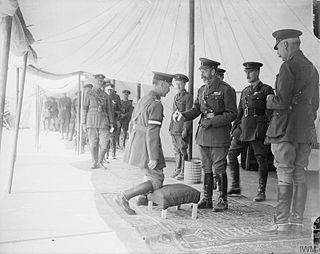 W
WMajor General Sir Robert Fanshawe, KCB, DSO was a British Army general, who, during World War I, commanded the 48th Division from 1915 to 1918. He was the youngest of three brothers who all rose to command divisions or corps during the war.
 W
WSergeant George Frederick Findlater VC was a Scottish soldier in the British Army, who was awarded the Victoria Cross, Britain's highest award for gallantry, for his role in the Tirah Campaign. On 20 October 1897, Findlater, then a junior piper in the Gordon Highlanders, was shot in the ankles during an advance against opposing defences at the Battle of the Dargai Heights; unable to walk, and exposed to enemy fire, he continued playing, to encourage the battalion's advance. The event was widely covered in the press, making Findlater a public hero.
 W
WGeneral Sir Alfred Gaselee,, was a soldier who served in the Indian Army.
 W
WLieutenant Colonel William Eagleson Gordon, VC, CBE was a Scottish British Army officer and recipient of the Victoria Cross, the highest and most prestigious award for gallantry in the face of the enemy that can be awarded to British and Commonwealth forces. He is the older brother of Archibald Alexander Gordon, who received the Legion of Honour and Order of Leopold.
 W
WGeneral Sir Hubert de la Poer Gough was a senior officer in the British Army in the First World War. A favourite of the British Commander-in-Chief, Field Marshal Sir Douglas Haig, he experienced a meteoric rise through the ranks during the war and commanded the British Fifth Army from 1916 to 1918.
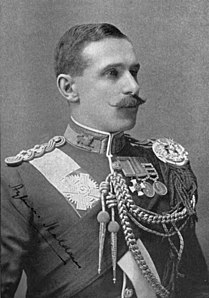 W
WGeneral Sir James Aylmer Lowthorpe Haldane, was a Scottish British Army General.
 W
WSir Ian Standish Monteith Hamilton, was a British Army officer who, following an extensive British Imperial military career in the Victorian and Edwardian eras, commanded the Mediterranean Expeditionary Force in the Gallipoli Campaign of the First World War.
 W
WColonel Sir Arthur George Hammond was an English recipient of the Victoria Cross, the highest and most prestigious award for gallantry in the face of the enemy that can be awarded to British and Commonwealth forces.
 W
WAlan Richard Hill VC was an English recipient of the Victoria Cross, the highest and most prestigious award for gallantry in the face of the enemy that can be awarded to British and Commonwealth forces. He won the VC for his actions on 28 January 1881 at the Battle of Laing's Nek during the First Boer War.
 W
WMajor-General Francis Henry Kelly was Commander of British Troops in South China.
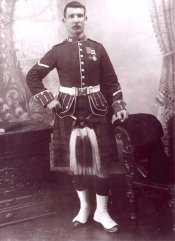 W
WEdward Lawson VC was an English recipient of the Victoria Cross, the highest and most prestigious award for gallantry in the face of the enemy that can be awarded to British and Commonwealth forces.
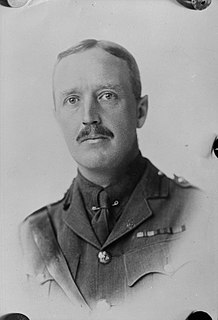 W
WMajor General Louis James Lipsett, was a senior officer in the British Army and Canadian Expeditionary Force during the First World War. He commanded the 3rd Canadian Division during some of the bitterest battles of the war, taking over in 1916 after his predecessor, Malcolm Mercer, was killed. He himself was killed in action less than a month before the end of the war during a reconnaissance mission observing German positions along the River Selle.
 W
WBrigadier-General John Hardress Lloyd was an Anglo-Irish soldier and polo player. He was awarded a DSO and made a Chevalier of the Légion d’Honneur for his service in the British Army during the First World War. As a polo player he won a silver medal with the Ireland team at the 1908 Summer Olympics.
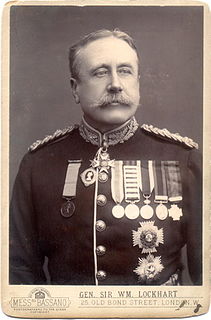 W
WGeneral Sir William Stephen Alexander Lockhart was a British General.
 W
WLieutenant-Colonel John Frederick MacKay was a Scottish recipient of the Victoria Cross, the highest and most prestigious award for gallantry in the face of the enemy that can be awarded to British and Commonwealth forces.
 W
WHector Lachlan Stewart MacLean, VC was a Scottish recipient of the Victoria Cross, the highest and most prestigious award for gallantry in the face of the enemy that can be awarded to British and Commonwealth forces.
 W
WLieutenant-General Sir William Raine Marshall was a British Army officer who in November 1917 succeeded Sir Frederick Stanley Maude as Commander-in-Chief of the British forces in Mesopotamia. He kept that position until the end of the First World War.
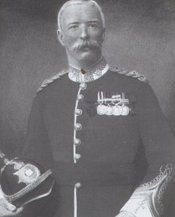 W
WMajor James Edward Ignatius Masterson VC was an Irish recipient of the Victoria Cross, the highest and most prestigious award for gallantry in the face of the enemy that can be awarded to British and Commonwealth forces.
 W
WBrigadier General Francis Aylmer Maxwell, was a British Army officer in the Second Boer War and First World War. He was also a recipient of the Victoria Cross (VC), the highest award for gallantry in the face of the enemy that can be awarded to British and Commonwealth forces.
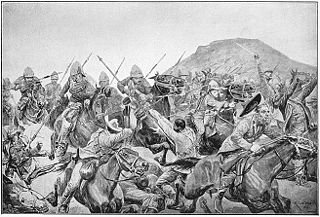 W
WMajor Matthew Fontaine Maury Meiklejohn VC was a British recipient of the Victoria Cross, the highest and most prestigious award for gallantry in the face of the enemy that can be awarded to British and Commonwealth forces.
 W
WMajor General Sir Charles John Melliss, was a British Army officer of the late 19th and early 20th centuries and a recipient of the Victoria Cross, the highest award for gallantry in the face of the enemy that can be awarded to British and Commonwealth forces. A staff officer in the Mesopotamian Campaign of the First World War, he was captured after the Siege of Kut.
 W
WField Marshal William Gustavus Nicholson, 1st Baron Nicholson, was a British Army officer who served in the Second Anglo-Afghan War, the Mahdist War, the Third Anglo-Burmese War, the Second Boer War and the First World War. He became Chief of the Imperial General Staff and was closely involved in the reorganisation of the British Army in the early years of the 20th century.
 W
WLieutenant-Colonel Sir William Frederick Travers O'Connor was an Irish diplomat and officer in the British and British Indian armies. He is remembered for his travels in Asia, cartography, study and publication of local cultures and language, his actions on the Younghusband expedition to Tibet, Royal Geographic Society council member, member of the Royal Automobile Club and for his work negotiating and signing the Nepal–Britain Treaty of 1923.
 W
WCaptain Henry Singleton Pennell VC was an English recipient of the Victoria Cross, the highest and most prestigious award for gallantry in the face of the enemy that can be awarded to British and Commonwealth forces.
 W
WGeneral Sir Arthur Power Palmer, was Commander-in-Chief, India between March 1900 and December 1902.
 W
WLieutenant General Sir George Lloyd Reilly Richardson was an officer in the British Indian Army from 1866 to 1909. He served across South East Asia, becoming a veteran of the Second Anglo-Afghan War and Boxer Rebellion, and later as commander of the Ulster Volunteer Force in Ireland.
 W
WColonel Richard Kirby Ridgeway was an Irish recipient of the Victoria Cross, the highest and most prestigious award for gallantry in the face of the enemy that can be awarded to British and Commonwealth forces.
 W
WMajor General (Thomas) Herbert Shoubridge CB, CMG, DSO was a British Army officer who became Commandant of the Royal Military College Sandhurst.
 W
WLieutenant-General Sir Pratap Singh, was a career British Indian Army officer, Maharaja of the princely state of Idar (Gujarat) and heir to Ahmednagar later renamed as Himmatnagar from 1902 to 1911, when he abdicated in favour of his adopted son.
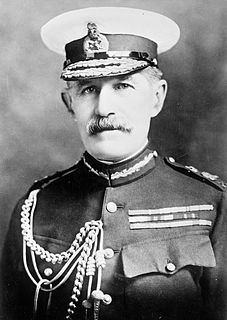 W
WGeneral Sir Horace Lockwood Smith-Dorrien, was a British Army General. One of the few British survivors of the Battle of Isandlwana as a young officer, he also distinguished himself in the Second Boer War.
 W
WLieutenant-Colonel John Manners Smith was a recipient of the Victoria Cross, the highest and most prestigious award for gallantry in the face of the enemy that can be awarded to British and Commonwealth forces.
 W
WMajor-General Sir William Penn Symons KCB was a British Army officer who was mortally wounded as he commanded his forces at the Battle of Talana Hill during the Second Boer War. While his forces won the battle, they had to abandon their position and fall back to Ladysmith. Symons and the more severely wounded were left to the Boers; he died three days later as a prisoner of war. A monument to his valour was raised in Victoria Park, Saltash, Cornwall, UK.
 W
WSir Ernest Beachcroft Beckwith Towse, was an English British Army officer and campaigner for the blind. He was a recipient of the Victoria Cross, the highest and most prestigious award for gallantry in the face of the enemy that can be awarded to British and Commonwealth forces.
 W
WSamuel Vickery VC was an English recipient of the Victoria Cross, the highest and most prestigious award for gallantry in the face of the enemy that can be awarded to British and Commonwealth forces.
 W
WOliver Cyril Spencer Watson VC DSO was an English posthumous recipient of the Victoria Cross, the highest and most prestigious award for gallantry in the face of the enemy that can be awarded to British and Commonwealth forces.
 W
WBrigadier-General Wallace Duffield Wright, was a British soldier and politician. He was a recipient of the Victoria Cross, the highest award for gallantry in the face of the enemy that can be awarded to British and Commonwealth forces.
 W
WMajor Charles Allix Lavington Yate, VC was an English British Army officer and recipient of the Victoria Cross, the highest and most prestigious award for gallantry in the face of the enemy that can be awarded to British and Commonwealth forces.
 W
WCaptain David Reginald Younger, VC was a Scottish recipient of the Victoria Cross, the highest and most prestigious award for gallantry in the face of the enemy that can be awarded to British and Commonwealth forces.